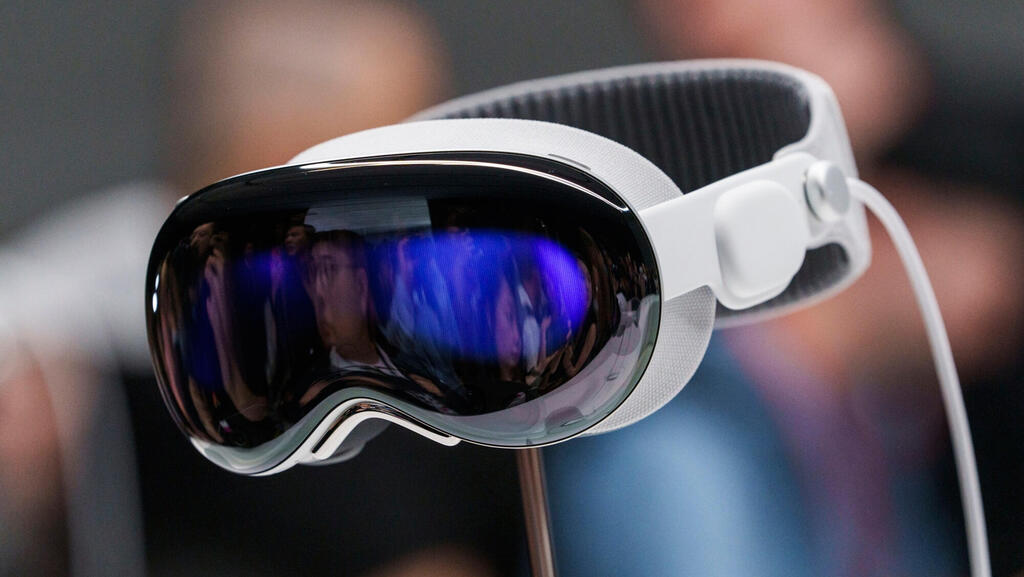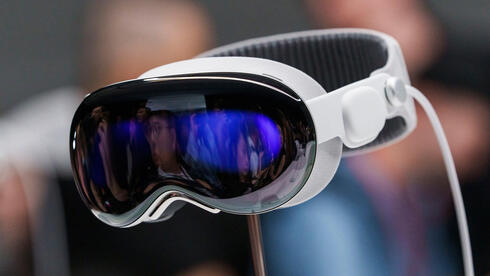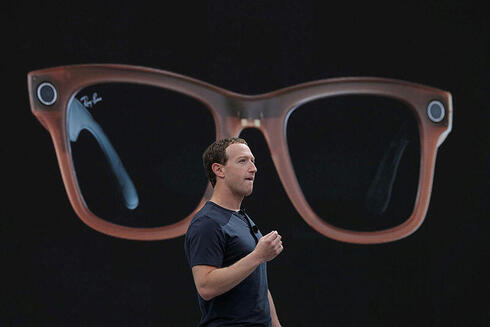
Beyond the hype: Will Apple's Vision Pro reshape daily life or Meta's simplicity prevail?
Attempts to convince people to wear AR or VR headsets have so far failed and mostly resulted in jokes. In the meantime, the technology has improved, the audience has matured, and it seems that Apple's bombastic Vision Pro now has a chance to succeed. But with a price tag of $3,499 the revolution may actually come from Meta's lightweight Smart Glasses
In the coming weeks, maybe even in the coming days, Apple is expected to start selling perhaps its biggest bet since the iPhone, and arguably its most expensive: the Apple Vision Pro mixed reality (MR) glasses. The glasses pack the most advanced technology in terms of display, motion detection, sensors and computing capabilities, and accordingly come with a starting price tag of $3,499. Apple hopes that this will be the beginning of the next great revolution of the technology world. But it is not the first, not even the second, who hopes to bring about such a revolution. Even though the market this time is significantly different than it was in previous attempts, it is possible that the revolution will come not from Apple's expensive and technology-laden product, but rather from Meta's lightweight and cheap alternative.
A little over a decade ago, in April 2013, Google unveiled what it hoped would be the great revolution of the technology world: Google Glass. Augmented reality (AR) glasses with a $1,500 price tag that the tech giant hoped would do for the world what the iPhone and smartphones did six years earlier. But the revolution did not happen. The technology wasn't there yet, the glasses were limited and unimpressive - the display screen was small, the control interface was unfriendly, and the capabilities were uninspiring - and most significantly: the public reacted with absolute negativity. The few users were even given the derogatory nickname Glassholes. Two years later Google stopped producing a consumer version. Industrial versions survived longer, but they too were finally scrapped in 2023.
Every few years another technology company comes along that tries to revive the trend, and not very successfully. Microsoft's HoloLens from 2016 didn't really catch on, and even though the company still markets HoloLens 2, it's a zombie product that hasn't received a significant update since 2019. Snap also still manufactures and markets Spectacles, which were unveiled in 2016, but hasn't introduced a new version of the product in nearly three years, and the glasses did not become a mainstream product or a significant source of income.
In 2018, it was the turn of startup company Magic Leap to fail with glasses that did not meet the high expectations that the company had built for about three years. Meta tried its hand for the first time in 2021 with Ray-Ban Stories, in collaboration with the popular sunglasses brand, but mainly received criticism regarding the violation of privacy, and according to the Wall Street Journal, as of the summer of 2023 it had sold only 300,000 units.
And like a broken clock, 2024 once again marks the year when the technology companies will try to convince us that what we need most in life is to see the world through the lenses of digital and connected glasses. But this time it might end differently. And not only because the one who is leading the attack this time is Apple, perhaps the only company with consistent success in creating new markets almost out of nothing (Apple II, iPod, iPhone, iPad and Apple Watch).
In the two and a half years that have passed since Ray-Ban Stories, technology has made a significant leap forward in terms of hardware and software, but, perhaps more importantly, we have also changed significantly, and what was unimaginable and socially inappropriate in 2013 has become acceptable in a completely different way in 2024.
Whether they fail or succeed, Apple's Vision Pro will probably be the talked about product of the year. From a technological point of view, they are an amazing demonstration of the leap that has been made in the decade that has passed since Google Glass. Instead of a small screen with a low resolution for only one eye, Apple's screens provide impressive quality and sharpness that enables a viewing experience that does not fall short of premium TV screens. Instead of a touch pad next to the ear, Vision Pro comes with advanced sensors that detect hand and eye movements and respond to voice gestures, meaning a natural and smooth control experience. Add to that processing capabilities similar to those of a good computer, an operating system that opens a portal to a large number of applications and fast browsing capabilities that allow to stream quality content, and you have a product that implements everything that Google Glass could never be. If it weren't for the scary price tag - at $3,499 it is one of Apple's three most expensive products - and their unwieldy and daunting appearance, one could safely bet on an impressive success.
Still, despite the price and appearance barriers, the Vision Pro has a better chance of succeeding than previous attempts. The technology that catapults the whole field forward is only one of the factors. Apple's ability to recruit developers and create an ecosystem of apps and content around its products is perhaps a more significant factor.
Apple, which already realized in 2008 with the launch of the App Store that the real power of a platform lies in becoming a playground for millions of developers from all over the world, knows very well how to attract developers to its platforms. The developers themselves also have an interest in being on what could be the next big platform right from the start. If Vision Pro fails, it won't happen because users have nothing to do with it.
But while most of the attention is diverted to Apple's new product, there are those who believe that the breakthrough will actually come from other players, those who present a vision that is perhaps less ambitious in terms of technology, but more practical in the aspect of everyday life. These products, which are called smart glasses, do not include advanced sensors, not even a screen, but mostly cameras, microphones, storage space and the ability to take photos and videos and share them (via a smartphone app) on social media. "We see incredible potential for smart glasses, especially if you can use voice and large language models (LLMs, the technology behind applications like ChatGPT) as a user interface," Qualcomm CEO Cristiano Amon told the Financial Times.
Related articles:
Snap's Spectacles are considered pioneers in this category, but the one getting most of the recent attention is the second-generation Ray-Ban Stories, which Meta launched last fall with a starting price tag of $299. The glasses are lighter and more comfortable than the previous generation, and similarly they can be used for taking pictures and listening to music. Their main innovation is support for the Meta AI assistant, which can be activated using voice commands. Later this year, the glasses will also be able to understand the visual context of the question addressed to their assistant (e.g., "What is this building?", "How do you fix this faucet?").
These capabilities were not possible when Google Glass was launched in 2013, not even when Meta launched the first generation of its glasses in 2021. But now, riding on the capabilities of generative artificial intelligence, these products can be controlled effortlessly, and without the need for a physical user interface such as a touchpad or motion sensors.

